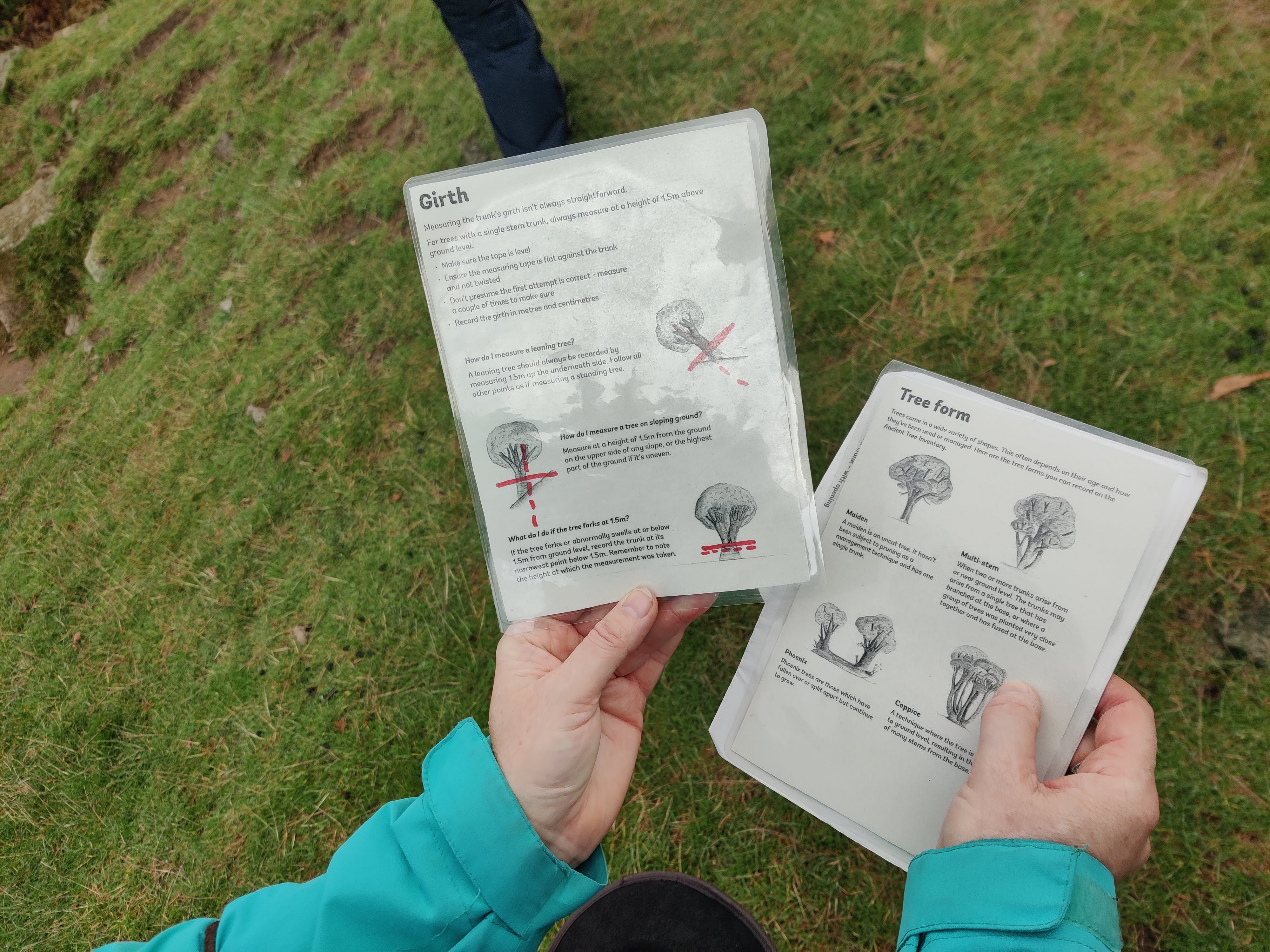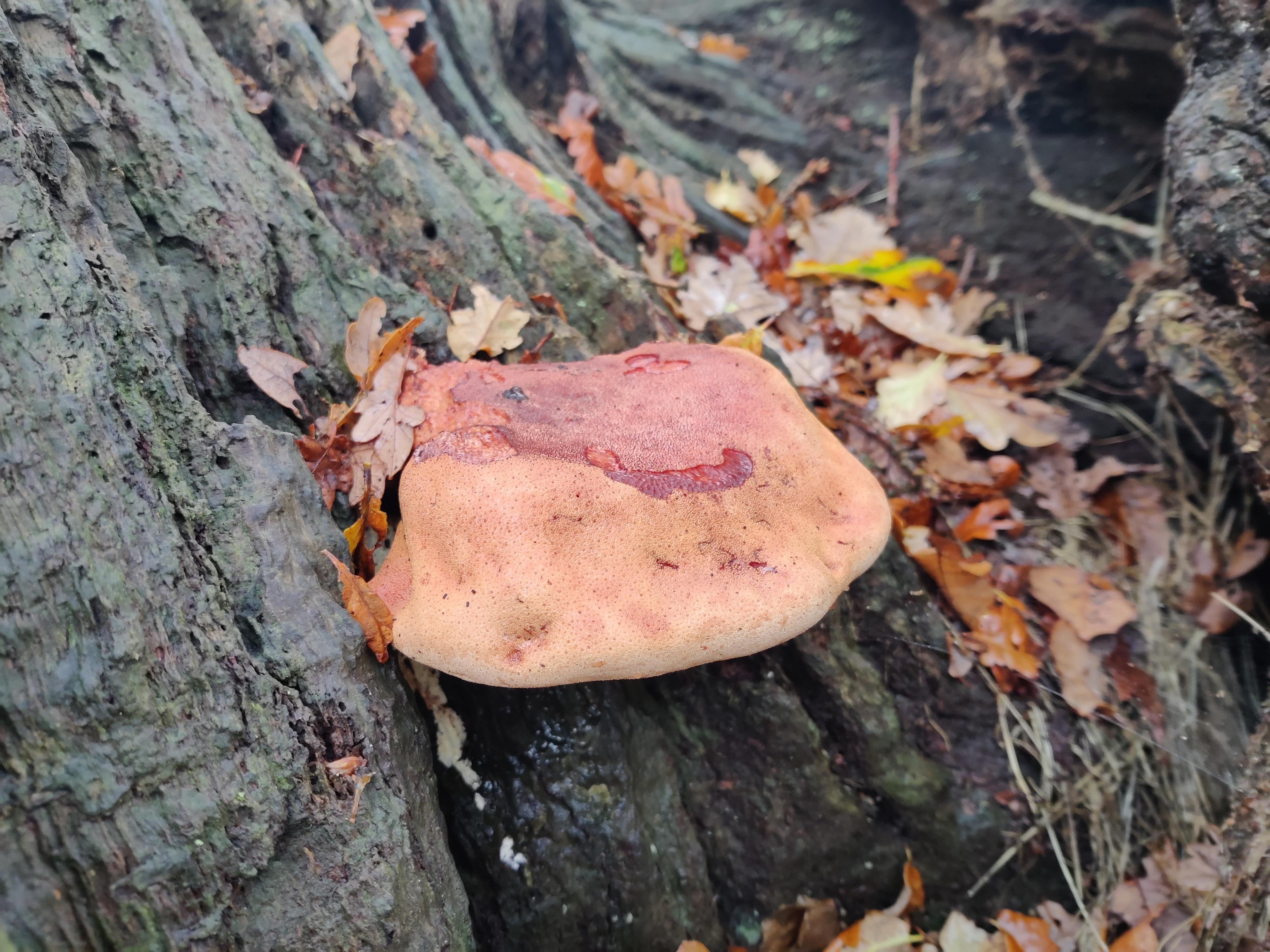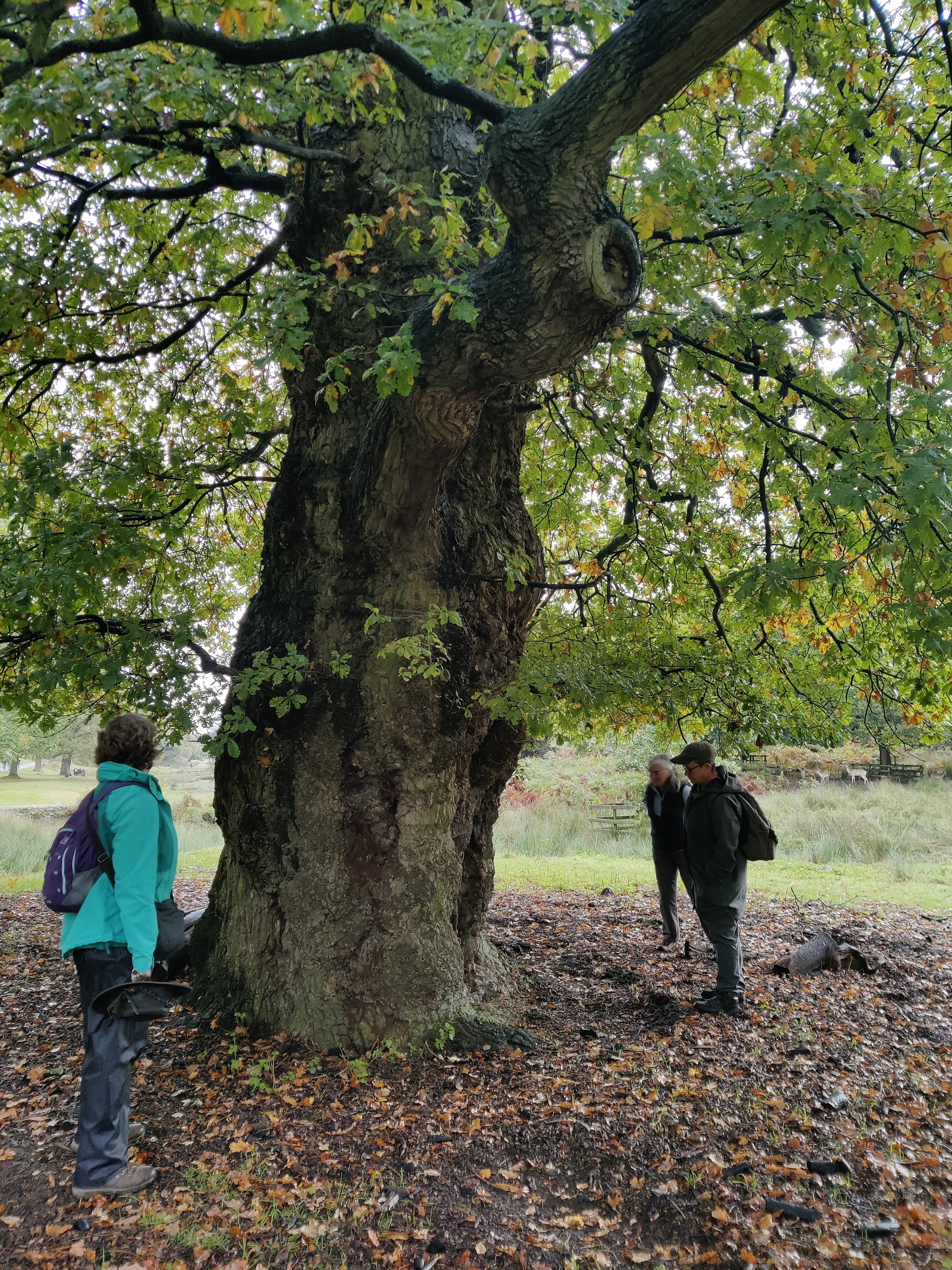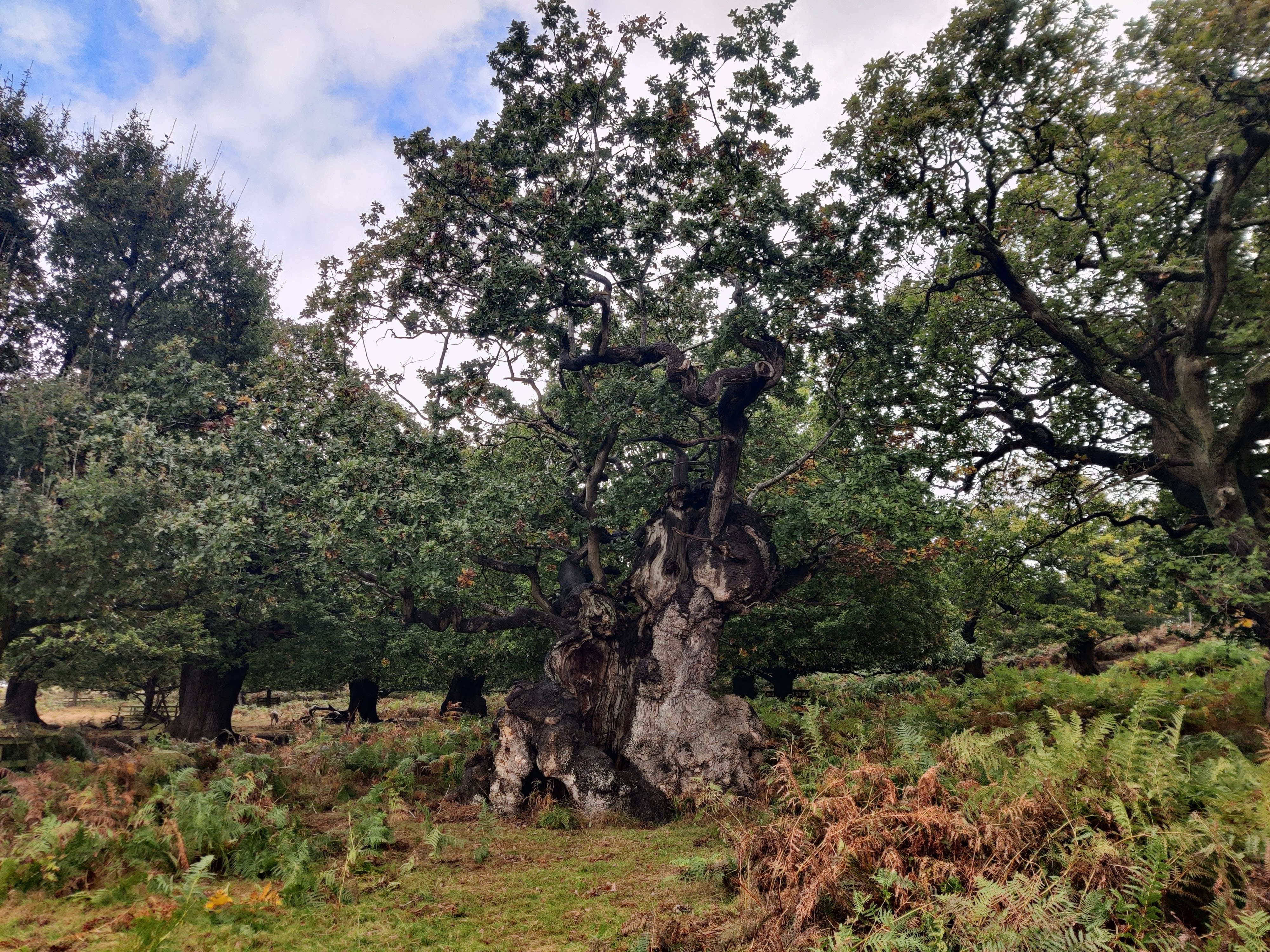A Glimpse into the Life of ATI Verifiers
Nea Weston, 24/10/2024
I had the pleasure of joining a group of Ancient Tree Inventory verifiers on a walk at Bradgate Park. The itinerary included looking at a selection of previously verified trees and meeting with the park ranger to look at more trees!
Bradgate Park is a large deer park, first enclosed more than 800 years ago. It has many gnarled, old oak trees, so was great for a bunch of ancient tree enthusiasts.


As soon as we walked into the park we were greeted by large old trees, sun, rain and many deer. We started by looking at a few trees as a group and discussing the status of these specimens. I have always wanted to be able to look at a tree and understand more about it than just its species, so this was amazing – so many tree lovers discussing every aspect of the tree!
The trees on the ATI (Ancient Tree Inventory) are categorised as either ‘notable’, ‘veteran’ or ‘ancient’. Ancient trees are the oldest, although there is no set age associated with the term as it varies between species. Once we had identified that a tree was old, many factors were considered to work out whether it was notable, veteran or ancient. We discussed the girth of the trunk, the shape and size of the canopy, whether the trunk was hollowing, whether there was decay or how creviced the bark was. My favourite term of the day was the ‘body language’ of the tree. (I’m still not sure what exactly that means but it sounds great and it’s on my list to look into!)

It was interesting to hear discussions about the verification. There are general trends in ancient trees: most ancient oak trees have a girth greater than six metres, but there are so many variables that could affect the girth, meaning it’s really important to look at other features of the trees. Evaluating whether the tree is hollowing can be difficult too. Sometimes it was really evident (there was a huge hole in the tree) but other times the group suspected it was hollow due to the shape of the trunk. Without gaining height to view it from above, we couldn’t be sure.



Noticeably, the discussion largely fell to the categorising system. The categories notable, veteran and ancient have broad definitions. When trying to categorise trees in the field, it’s hard to see where the line is drawn between one or the other. The thing that jumped out at me was that although as a group we were categorising trees and had a checklist of features to look for, the process was nowhere near a checkbox exercise. Each tree is unique, and trying to read and interpret its features is a joyful process. It seemed to me that the verifiers had a deep understanding and ability to read the trees, developed from looking at so many old trees and their passion for it! Appreciation for these trees was shared wholeheartedly by the group, which was a lovely thing to be a part of.
Until this walk I had never considered how the ATI verification process works. Anyone can add a tree to the ATI website. Once a tree is added, the verifiers can see the addition, visit the tree and confirm or adjust the category and information about it. I asked the verifiers why they verify these trees and what it means to them.

One verifier said she loves the ATI as she just loves anything to do with trees. She said verifying trees gets her out to all kinds of places. She volunteers for another charity where she often works planting young trees, and especially loves that she gets to work with trees at all stages of their life.
Another verifier said she always looks for a tree to verify when she is traveling somewhere – a much nicer stop than a service station! Verifying for the ATI is really flexible work, so can easily fit into people’s lives.
The ATI community is a great place to learn about veteran and ancient trees, and a place for people to put their tree knowledge to use. There was a real understanding of the importance of getting old trees recognised on the ATI website, as this offers them protection they may not otherwise have. Being an ATI verifier is accessible too! Verifying involves skills that all of us can pick up, and comes with a great community of tree enthusiasts that all help each other.
I left the walk with a stack of notes, a sparked interest in ancient trees and a wholehearted recommendation for visiting Bradgate Park. The visit must have quadrupled both the number of ancient trees and deer I’ve ever seen, and it was a lovely place to walk around, even in the rain!

